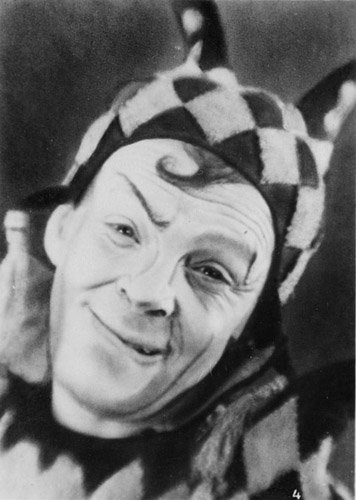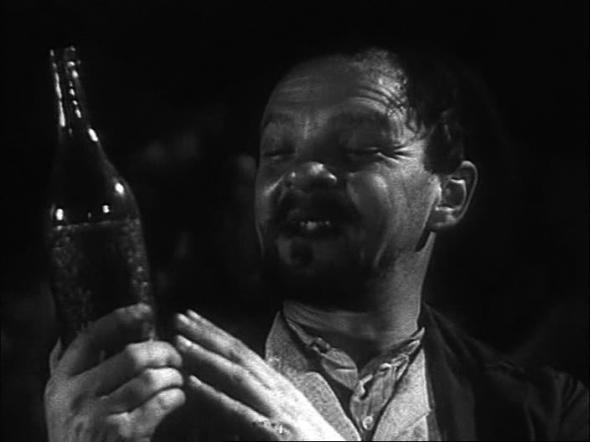|
Benjamin Zuskin
Benjamin Zuskin (russian: Вениамин Львович Зу́скин (Veniamin Lvovich Zuskin); April 28, 1899 – August 12, 1952) was a Soviet and Russian actor and director of the Moscow State Jewish Theatre (GOSET). Zuskin had the title of People's Artist of the RSFSR. Biography Zuskin was born in April 1899 in the town of Ponevezh (Panevėžys), in the then Kovno Governorate of the Russian Empire, today Lithuania, a son of a tailor.Zuskin, Benjamin (in Yiddish). ''Leksikon fun Yidishn Teater''. Ed. Zalmen Zylbercweig, with the assistance of Jakob Mestel. Vol. 1. New York: Elisheva, 1931. p. 766. Retrieved 2019-12-21. He attended a cheder. Zuskin was admitted into Realschule, real school in 1911. Following the April 1915 defeat of a Russian army at the hands of the German army, the Russian authorities orde ... [...More Info...] [...Related Items...] OR: [Wikipedia] [Google] [Baidu] |
Kovno Ghetto
The Kovno Ghetto was a ghetto established by Nazi Germany to hold the Lithuanian Jews of Kaunas during the Holocaust. At its peak, the Ghetto held 29,000 people, most of whom were later sent to concentration and extermination camps, or were shot at the Ninth Fort. About 500 Jews escaped from work details and directly from the Ghetto, and joined Soviet partisan forces in the distant forests of southeast Lithuania and Belarus. Establishment The Nazis established a civilian administration under SA Brigadefuhrer Hans Cramer to replace military rule in place from the invasion of Lithuania on June 22, 1941. The Lithuanian Provisional Government was officially disbanded by the Nazis after only a few weeks, but not before approval for the establishment of a ghetto under the supervision of Lithuanian military commandant of Kaunas Jurgis Bobelis, extensive laws enacted against Jews and the provision of auxiliary police Auxiliary police, also called special police, are usually the pa ... [...More Info...] [...Related Items...] OR: [Wikipedia] [Google] [Baidu] |
Lubyanka Building
The Lubyanka ( rus, Лубянка, p=lʊˈbʲankə) is the popular name for the building which contains the headquarters of the FSB, and its affiliated prison, on Lubyanka Square in the Meshchansky District of Moscow, Russia. It is a large Neo-Baroque building with a facade of yellow brick designed by Alexander V. Ivanov in 1897 and augmented by Aleksey Shchusev from 1940 to 1947. It was previously the national headquarters of the KGB. Soviet hammer and sickles can be seen on the building's facade. Description The Lubyanka building is home to the Lubyanka prison, the headquarters of the Border Guard Service, a KGB museum, and a subsection of the FSB. Part of the prison was turned into a prison museum, but a special authorization is required for visits. The lower floors are made of granite with emblazoned Soviet crests. History Origins The Lubyanka was originally built in 1898 as the headquarters of the All-Russia Insurance Company (''Rossiya Insurance Company''), ... [...More Info...] [...Related Items...] OR: [Wikipedia] [Google] [Baidu] |
Jewish Anti-Fascist Committee
The Jewish Anti-Fascist Committee, ''Yevreysky antifashistsky komitet'' yi, יידישער אנטי פאשיסטישער קאמיטעט, ''Yidisher anti fashistisher komitet''., abbreviated as JAC, ''YeAK'', was an organization that was created in the Soviet Union during World War II to influence international public opinion and organize political and material support for the Soviet fight against Nazi Germany, particularly from the West. It was organized by the Jewish Bund leaders Henryk Erlich and Victor Alter, upon an initiative of Soviet authorities, in fall 1941; both were released from prison in connection with their participation. Following their re-arrest, in December 1941, the Committee was reformed on Joseph Stalin's order Sebag-Montefiore, Simon. Stalin: The Court of the Red Tsar. 2003. page 560. in Kuibyshev in April 1942 with the official support of the Soviet authorities. In 1952, as part of the persecution of Jews in the last year part of Stalin's rule (for example ... [...More Info...] [...Related Items...] OR: [Wikipedia] [Google] [Baidu] |
Seekers Of Happiness
''Seekers of Happiness'' (russian: Искатели счастья, Iskateli schastya) is a Soviet film from 1936 trying to attract Jews to the Jewish Autonomous Oblast (JAO) in the far east of the USSR. It is also known by its alternative name, A Greater Promise. Plot The film tells the story of a Jewish family relocating to the JAO (a.k.a. Birobidžan). "The plot lays out a successful solution to the 'Jewish Question' through two love stories and a crime" in the JAO. The love stories and crime provide a narrative basis to demonstrate how several obstacles are overcome: # The end to impoverishment of the Jewish population; # The transformation of Jews into farmers; # Shifting the social structure of the Jews by integrating them into a “productive work” environment; # Replacing formerly religious social with secular socialist institutions; and # The sublimation of religiously and culturally based contradictions between different nationalities by virtue of a secular sociali ... [...More Info...] [...Related Items...] OR: [Wikipedia] [Google] [Baidu] |
Minsk
Minsk ( be, Мінск ; russian: Минск) is the capital and the largest city of Belarus, located on the Svislach and the now subterranean Niamiha rivers. As the capital, Minsk has a special administrative status in Belarus and is the administrative centre of Minsk Region (voblast) and Minsk District (raion). As of January 2021, its population was 2 million, making Minsk the 11th most populous city in Europe. Minsk is one of the administrative capitals of the Commonwealth of Independent States (CIS) and the Eurasian Economic Union (EAEU). First documented in 1067, Minsk became the capital of the Principality of Minsk before being annexed by the Grand Duchy of Lithuania in 1242. It received town privileges in 1499. From 1569, it was the capital of the Minsk Voivodeship, an administrative division of the Polish–Lithuanian Commonwealth. It was part of a region annexed by the Russian Empire in 1793, as a consequence of the Second Partition of Poland. From 1919 to 1991, aft ... [...More Info...] [...Related Items...] OR: [Wikipedia] [Google] [Baidu] |
King Lear
''King Lear'' is a tragedy written by William Shakespeare. It is based on the mythological Leir of Britain. King Lear, in preparation for his old age, divides his power and land between two of his daughters. He becomes destitute and insane and a proscribed crux of political machinations. The first known performance of any version of Shakespeare's play was on Saint Stephen's Day in 1606. The three extant publications from which modern editors derive their texts are the 1608 quarto (Q1) and the 1619 quarto (Q2, unofficial and based on Q1) and the 1623 First Folio. The quarto versions differ significantly from the folio version. The play was often revised after the English Restoration for audiences who disliked its dark and depressing tone, but since the 19th century Shakespeare's original play has been regarded as one of his supreme achievements. Both the title role and the supporting roles have been coveted by accomplished actors, and the play has been widely adapted. In his ' ... [...More Info...] [...Related Items...] OR: [Wikipedia] [Google] [Baidu] |
Shtetl
A shtetl or shtetel (; yi, שטעטל, translit=shtetl (singular); שטעטלעך, romanized: ''shtetlekh'' (plural)) is a Yiddish term for the small towns with predominantly Ashkenazi Jewish populations which existed in Eastern Europe before the Holocaust. The term is used in the contexts of peculiarities of former East European Jewish societies as islands within the surrounding non-Jewish populace, and bears certain socio-economic and cultural connotations.Marie Schumacher-Brunhes"Shtetl" ''European History Online'', published July 3, 2015 Shtetls (or shtetels, shtetlach, shtetelach or shtetlekh) were mainly found in the areas that constituted the 19th-century Pale of Settlement in the Russian Empire as well as in Congress Poland, Austrian Galicia, Kingdom of Romania and in the Kingdom of Hungary. In Yiddish, a larger city, like Lviv or Chernivtsi, is called a ' ( yi, שטאָט), and a village is called a ' ( yi, דאָרף). "Shtetl" is a diminutive of ' with the meanin ... [...More Info...] [...Related Items...] OR: [Wikipedia] [Google] [Baidu] |
Alexis Granowsky
Alexis Granowsky (russian: Алексе́й Миха́йлович Грано́вский; 1890–1937) was a Russian theatre director who later became a film director. Granowsky was born as Abraham Azarkh to a Jewish family in Moscow. After studying in St. Petersburg, he went to Munich where he gained valuable theatre experience working under Max Reinhardt. He served in the Russian army during the First World War before in 1919 he set up his own Jewish-orientated theatre in St. Petersburg, which under a new director became GOSET. Granowsky's reputation rose quickly over the following years, as he became one of the most celebrated theatre directors in Europe. In 1925 Granowsky directed his first film, a silent, but concentrated his efforts on his stage work. After the Russian Revolution, and the Communist victory in the Russian Civil War, Granowsky continued to live in the country even though he felt himself culturally Western European. Granowsky was initially feted by the Sovi ... [...More Info...] [...Related Items...] OR: [Wikipedia] [Google] [Baidu] |
Abraham Goldfaden
Abraham Goldfaden (Yiddish: אַבֿרהם גאָלדפֿאַדען; born Avrum Goldnfoden; 24 July 1840 – 9 January 1908), also known as Avram Goldfaden, was a Russian-born Jewish poet, playwright, stage director and actor in the languages Yiddish and Hebrew, author of some 40 plays. Goldfaden is considered the father of modern Jewish theatre. In 1876 he founded in Romania what is generally credited as the world's first professional Yiddish-language theater troupe. He was also responsible for the first Hebrew-language play performed in the United States. The Avram Goldfaden Festival of Iaşi, Romania, is named and held in his honour. Jacob Sternberg called him "the Prince Charming who woke up the lethargic Romanian Jewish culture." Israil Bercovici wrote of his works: "we find points in common with what we now call 'total theater'. In many of his plays he alternates prose and verse, pantomime and dance, moments of acrobatics and some of ''jonglerie'', and even of spirituali ... [...More Info...] [...Related Items...] OR: [Wikipedia] [Google] [Baidu] |
The Sorceress (play)
''The Witch of Botoşani'' or simply ''The Witch'' or ''The Sorceress'' (original Yiddish title ''Di Kishefmakhern'') was an 1878, or possibly 1877, play by Abraham Goldfaden. Like most of Goldfaden's major works, it included music. The play was based on popular superstition; Goldfaden would later remark, "I wrote ''Di kishefmakhern'' (''The Witch'') in Romania, where the populace – Jews as much as Romanians – believe strongly in witches." ercovici, 1998The title role, a female character, was written to be played by a man; it was first played by Israel Grodner. The play survived into a far different era of Yiddish theater: Maurice Schwartz played it at New York City's Yiddish Art Theater in 1925. dler, 1999, 107 (commentary) Jacob Adler made his 1878 stage debut in the role of the lover Marcus, in a production in Kherson, Ukraine, in which Israel Rosenberg played the title role. dler, 1999, 107 Restoration In the Fall of 2017, the National Yiddish Theater – Folksb ... [...More Info...] [...Related Items...] OR: [Wikipedia] [Google] [Baidu] |
The YIVO Encyclopedia Of Jews In Eastern Europe
''The YIVO Encyclopedia of Jews in Eastern Europe'' is a two-volume, English-language reference work on the history and culture of Eastern Europe Jewry in this region, prepared by the YIVO Institute for Jewish Research and published by Yale University Press in 2008. Print edition The encyclopedia, 2,400 pages in length, contains over 1,800 alphabetical entries written by 450 contributors, and features over 1,000 illustrations and 55 maps. Online edition The online version of the Encyclopedia was officially launched June 10, 2010. It's free to accesonline Awards and honors * Choice: Current Reviews for Academic Libraries Outstanding Academic Title 2008 *Recipient of the 2009 Dartmouth Medal Honorable Mention by the American Library Association. *Honorable Mention for the 2008 PROSE Award in the Multi-volume Reference/Humanities & Social Sciences category, from the Association of American Publishers *Winner of the 2008 Judaica Reference Award, given by the Association of Jew ... [...More Info...] [...Related Items...] OR: [Wikipedia] [Google] [Baidu] |







